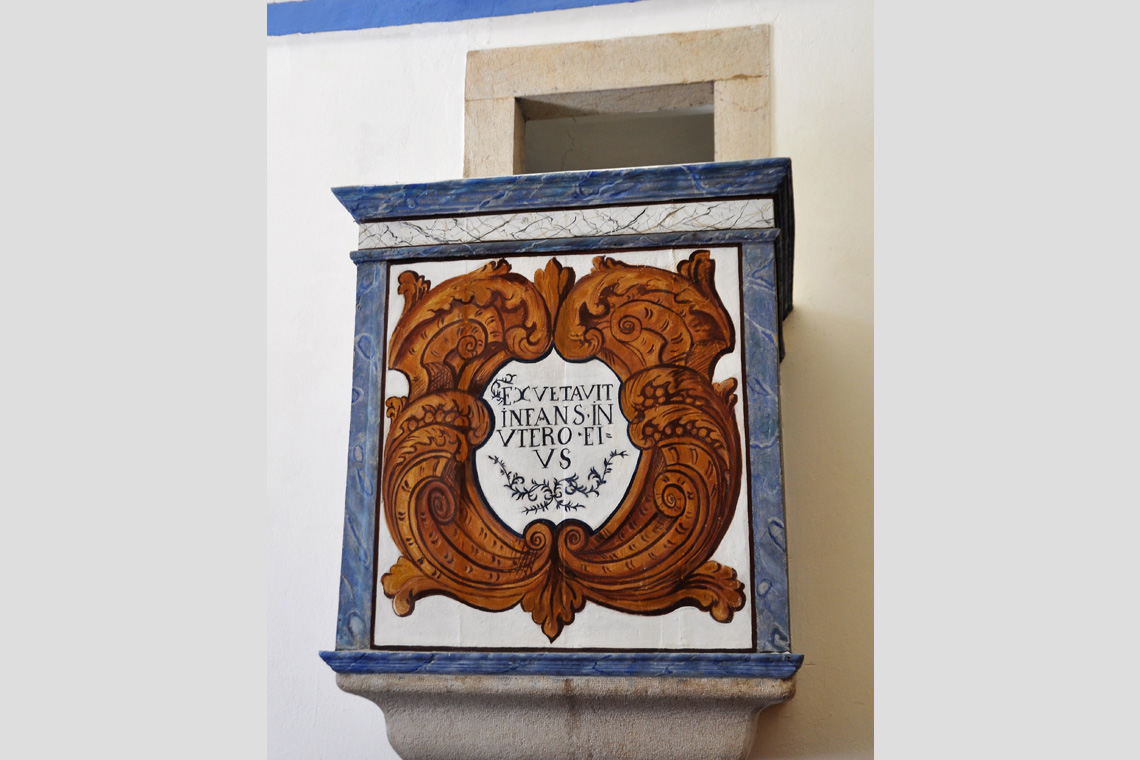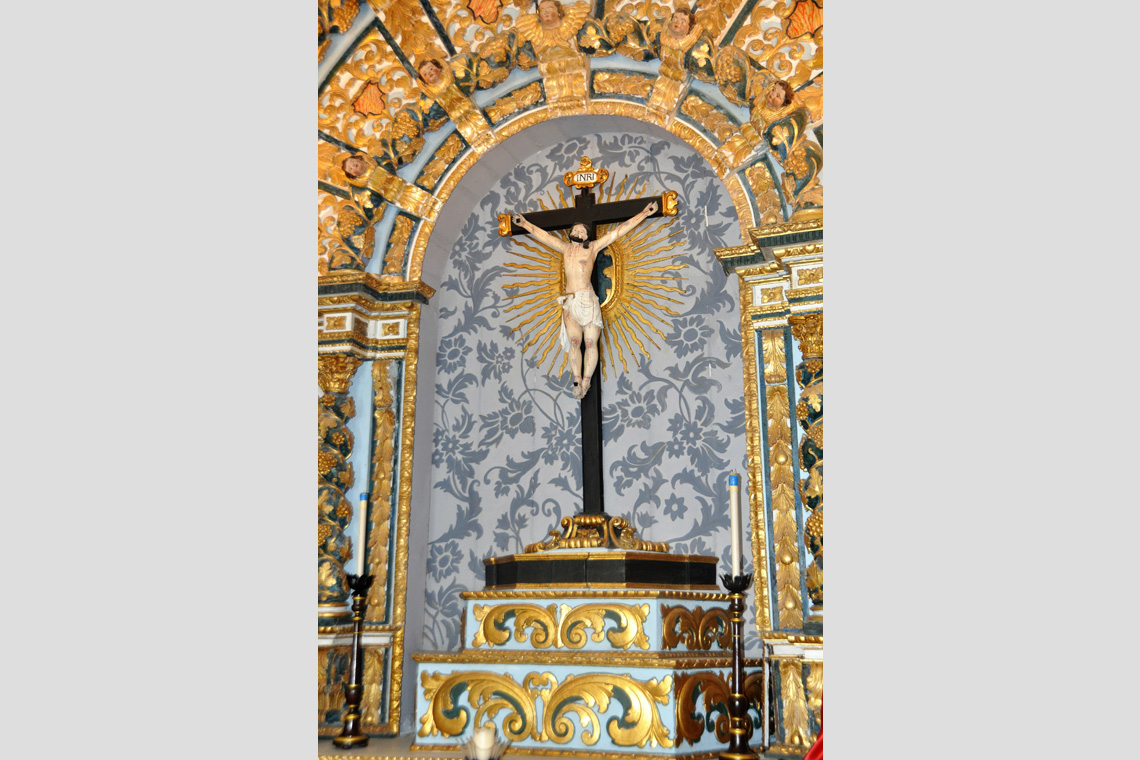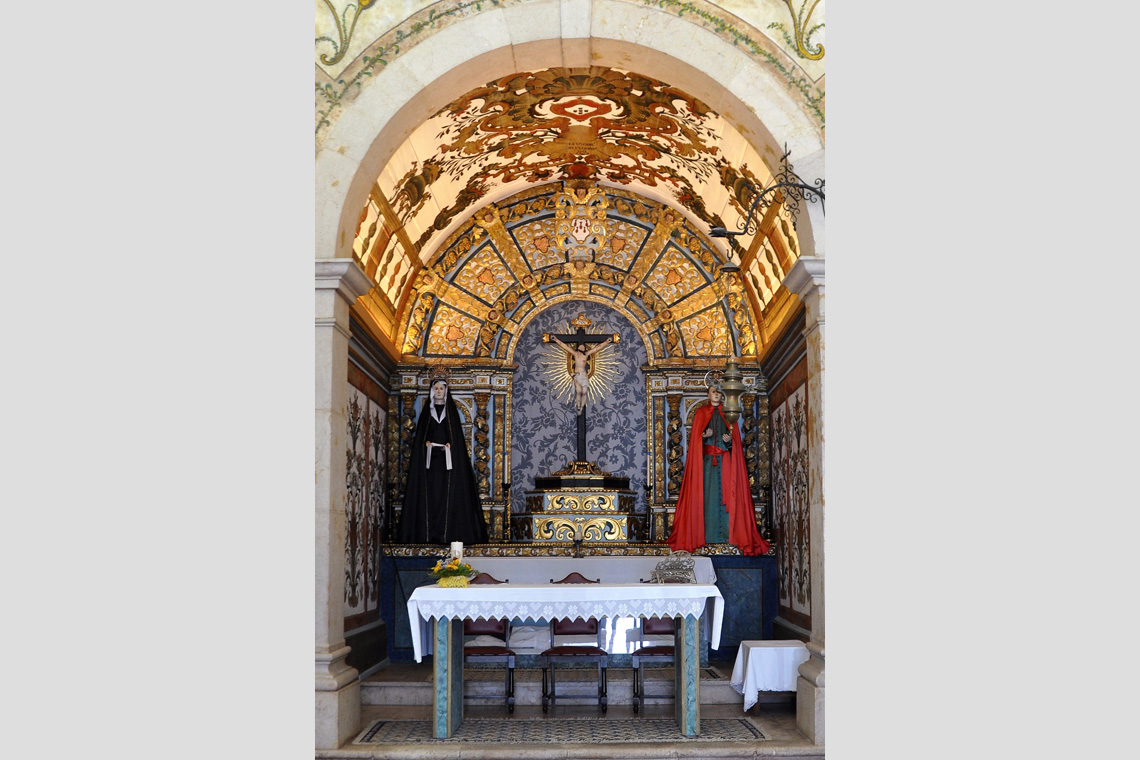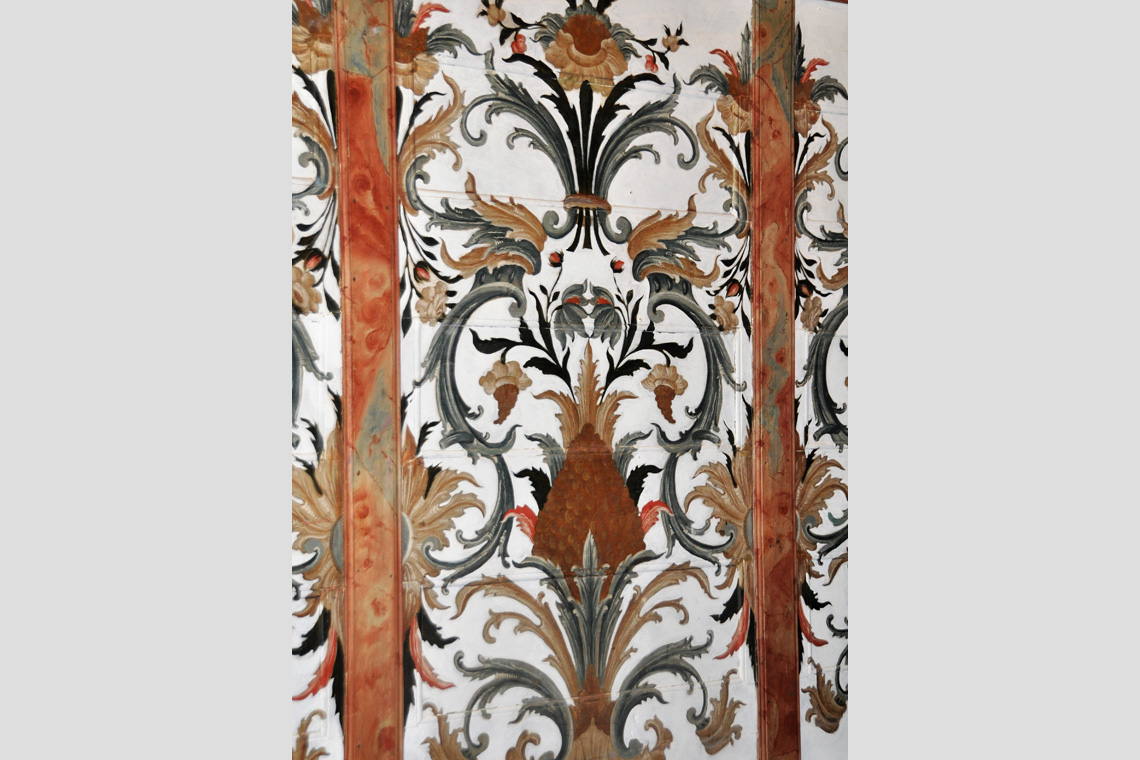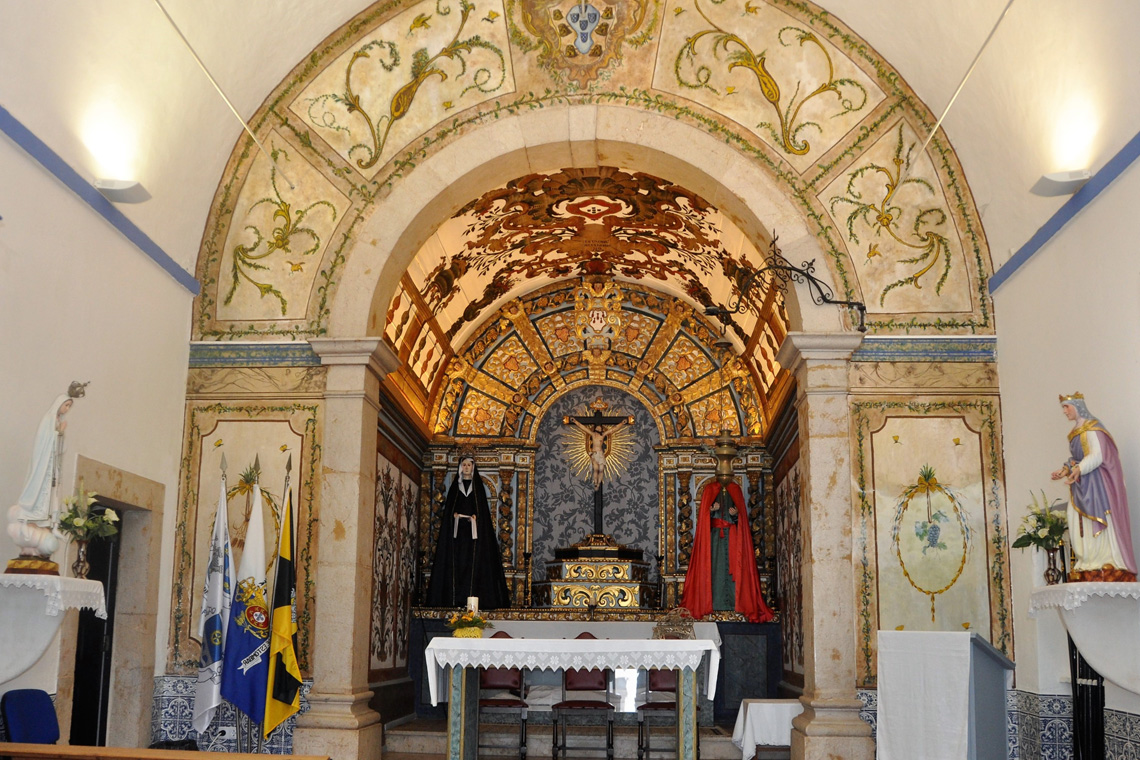18. Igreja da Misericórdia de Estômbar
Mercy Church of Estômbar
Mercy Church of Estômbar
Cronologia: Idade Moderna (séc. XVI-XVIII) e Idade Contemporânea (séc. XX)
Chronology: Modern Age (16th-18th century) and Contemporary Age (20th century)
Chronology: Modern Age (16th-18th century) and Contemporary Age (20th century)
A Igreja da Misericórdia de Estômbar é uma das misericórdias mais antigas do país, embora não seja reconhecida uma data exata sobre a sua fundação, não deixa de ser elucidativa a inscrição, cravada na verga da porta de acesso à sacristia onde se lê:
" ESTE ESPITAL MANDOU FAZER DIº PINCHO/ESCUDEIRO DE LOPO FRZ GAGO MÕR EM ESTE/LUGAR DESTOMBAR A 18 DE ABRIL DE 1531".
Neste local funcionou o hospital mandado edificar pelo Escudeiro Diogo Pincho conforme inscrição referenciada. A fachada deste templo, encimada por frontão triangular e pinaculado, conserva porta quinhentista, sob óculo e escudo com coroa real e campanário do sec. XVIII (1754). Apresenta nave única coberta por abóbada de berço. Tanto o arco triunfal como a capela-mor oferecem pinturas da mesma centúria (1767), sendo o retábulo do altar em talha dourada. Tem um crucifixo de madeira com o "resplendor da glória" e duas imagens de "roca" representando N. Sra. da Soledade e S. João Evangelista, possivelmente originárias da segunda metade do Seculo XVII. De salientar ainda a existência da imagem do Sr. Morto que se encontra sob o altar. As insígnias da Santa Casa encontram-se expostas na igreja tal como as varas do mando (9), todas do sec. XVII.
" ESTE ESPITAL MANDOU FAZER DIº PINCHO/ESCUDEIRO DE LOPO FRZ GAGO MÕR EM ESTE/LUGAR DESTOMBAR A 18 DE ABRIL DE 1531".
Neste local funcionou o hospital mandado edificar pelo Escudeiro Diogo Pincho conforme inscrição referenciada. A fachada deste templo, encimada por frontão triangular e pinaculado, conserva porta quinhentista, sob óculo e escudo com coroa real e campanário do sec. XVIII (1754). Apresenta nave única coberta por abóbada de berço. Tanto o arco triunfal como a capela-mor oferecem pinturas da mesma centúria (1767), sendo o retábulo do altar em talha dourada. Tem um crucifixo de madeira com o "resplendor da glória" e duas imagens de "roca" representando N. Sra. da Soledade e S. João Evangelista, possivelmente originárias da segunda metade do Seculo XVII. De salientar ainda a existência da imagem do Sr. Morto que se encontra sob o altar. As insígnias da Santa Casa encontram-se expostas na igreja tal como as varas do mando (9), todas do sec. XVII.
The Igreja da Misericórdia de Estômbar (Estômbar Misericórdia Church) is one of the oldest Misericórdia charitable institutions in the country, and, although it is not known exactly when it was founded, some information is provided by the inscription carved on the lintel of the doorway to the sacristy, which says:
" ESTE ESPITAL MANDOU FAZER DIº PINCHO/ESCUDEIRO DE LOPO FRZ GAGO MÕR EM ESTE/LUGAR DESTOMBAR A 18 DE ABRIL DE 1531".
It was on this site that the hospital commissioned by Squire Diogo Pincho was built, according to this inscription. The façade of the church is surmounted by a triangular pediment with pinnacles, and it has a 16th century door under the ocular window and a coat of arms with the royal crown, and an 18th century bell-gable (1754). The church has a single nave covered by a barrel vault. Both the triumphal arch and the chancel contain paintings from the same century (1767), and it has a gilt carved altarpiece. It contains a wooden crucifix with the "brightness of his glory" and two "imagens de roca" (statues on a wooden frame) representing Our Lady of Solitude and St. John the Evangelist, possibly dating from the second half of the 17th century. Another notable feature is the statue of the dead Christ located under the altar. The insignias of the Santa Casa are displayed in the church, as well as the staffs of authority (9), all dating from the 17th century.
" ESTE ESPITAL MANDOU FAZER DIº PINCHO/ESCUDEIRO DE LOPO FRZ GAGO MÕR EM ESTE/LUGAR DESTOMBAR A 18 DE ABRIL DE 1531".
It was on this site that the hospital commissioned by Squire Diogo Pincho was built, according to this inscription. The façade of the church is surmounted by a triangular pediment with pinnacles, and it has a 16th century door under the ocular window and a coat of arms with the royal crown, and an 18th century bell-gable (1754). The church has a single nave covered by a barrel vault. Both the triumphal arch and the chancel contain paintings from the same century (1767), and it has a gilt carved altarpiece. It contains a wooden crucifix with the "brightness of his glory" and two "imagens de roca" (statues on a wooden frame) representing Our Lady of Solitude and St. John the Evangelist, possibly dating from the second half of the 17th century. Another notable feature is the statue of the dead Christ located under the altar. The insignias of the Santa Casa are displayed in the church, as well as the staffs of authority (9), all dating from the 17th century.

